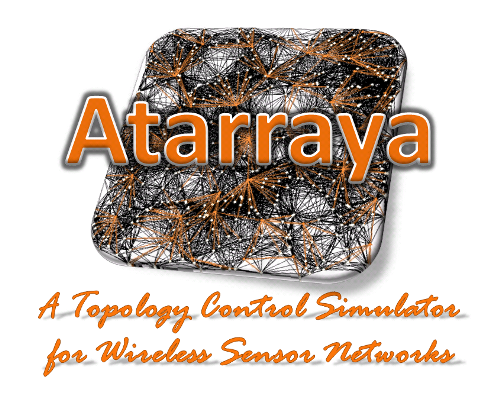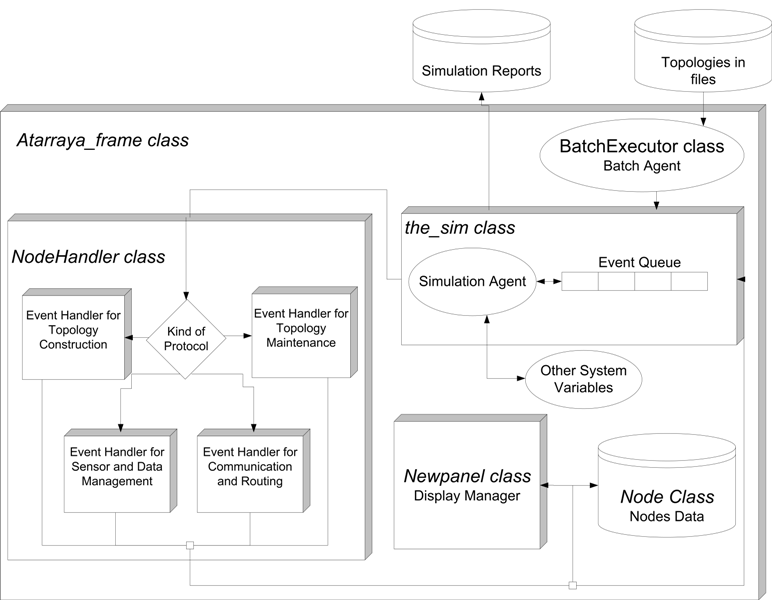
Current Version: 1.2 beta 3
Last update: September 2009

Current Version: 1.2 beta 3
Last update: September 2009
|
Atarraya is a simulation tool for teaching and researching topology control algorithms and protocols for wireless sensor networks. This project was initiated as part of our research work in this area and included as part of our book "Topology Control in Wireless Sensor Networks" published by Springer in 2009. The main idea of Atarraya is to provide a simple tool for creating and testing old and new topology control protocols. Following the book's new definition of topology control, Atarraya includes both topology construction and topology maintenance protocols and algorithms. The inclusion of topology maintenance is a unique aspect of Atarraya. Atarraya's modularity makes it very easy to create new protocols. Atarraya can also be used in the classroom for teaching purposes. Atarraya's graphical user interface makes it easy to illustrate how these protocols work. In the current version, Atarraya provides the following features:
Some Techinical Details 
Documentation We are updating a guided example and some other technical documentation. A good start is the recently accepted paper about Atarraya that was presented in SIMUTools 2009. The paper can be found in this link. For now, here are some images from the GUI:
Reported Bugs Please email us with any bugs that you find while using the tool. We will be more than happy to fix them and provide these fixes to the entire community here Also, if you develop new algorithms and protocols as part of your research, it would be very nice if you share them with the research community. If you email us with those additions, we will be more than happy to include them in a new version of Atarraya. Publications 1. Topology Control in Wireless Sensor Networks. Tutorial given in IEEE Latincom 2010. 2. Miguel A. Labrador and Pedro Wightman “Topology Control in Wireless Sensor Networks - with a companion simulation tool for teaching and research “, Springer Science + Business Media B.V. 2009. ISBN: 978-1-4020-9584-9. 3. Pedro Wightman and Miguel A. Labrador, “Topology Maintenance: Extending the Lifetime of Wireless Sensor Networks.“, IEEE LantinCom 2009, September 2009. 4. Pedro Wightman and Miguel A. Labrador, “Atarraya: A Simulation Tool to Teach and Research Topology Control Algorithms for Wireless Sensor Networks“, ICST 2nd International Conference on Simulation Tools and Techniques, SIMUTools 2009, February 2009. 5. Pedro Wightman and Miguel A. Labrador, “A3: A Topology Control Algorithm for Wireless Sensor Networks,” IEEE Globecom 2008, November 2008.
|
||